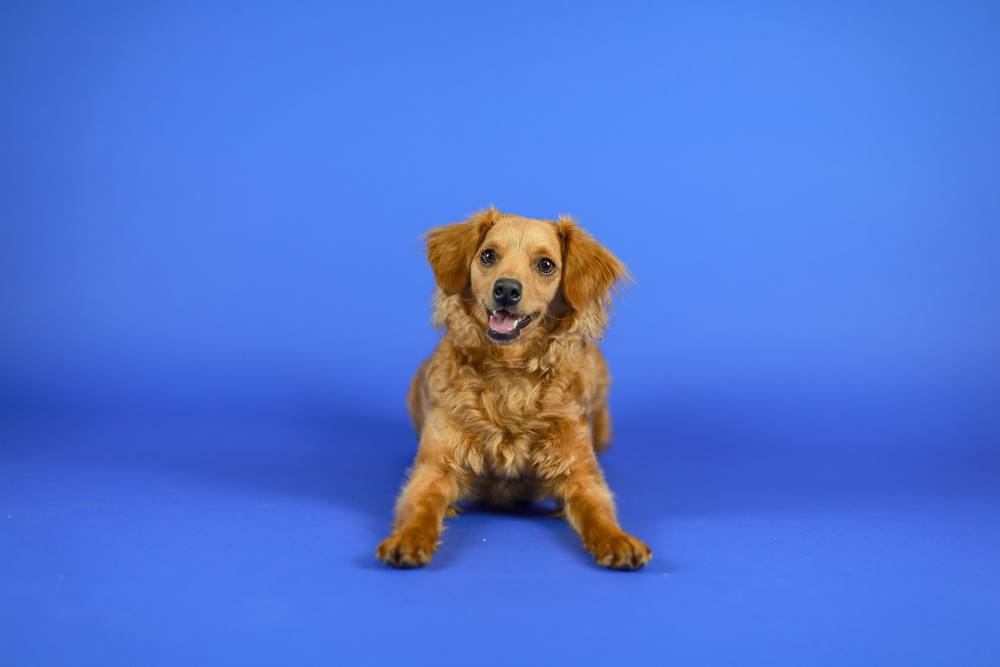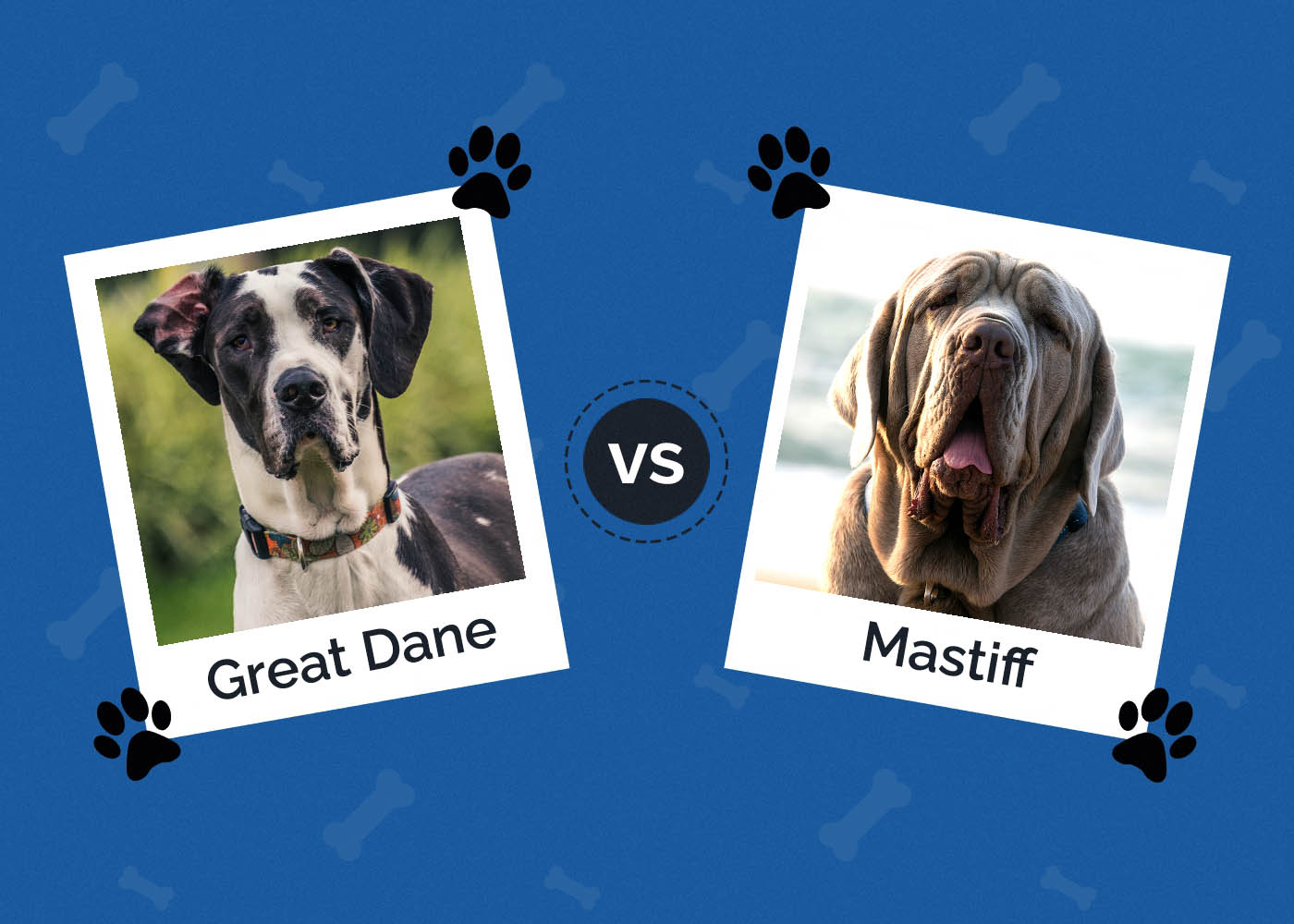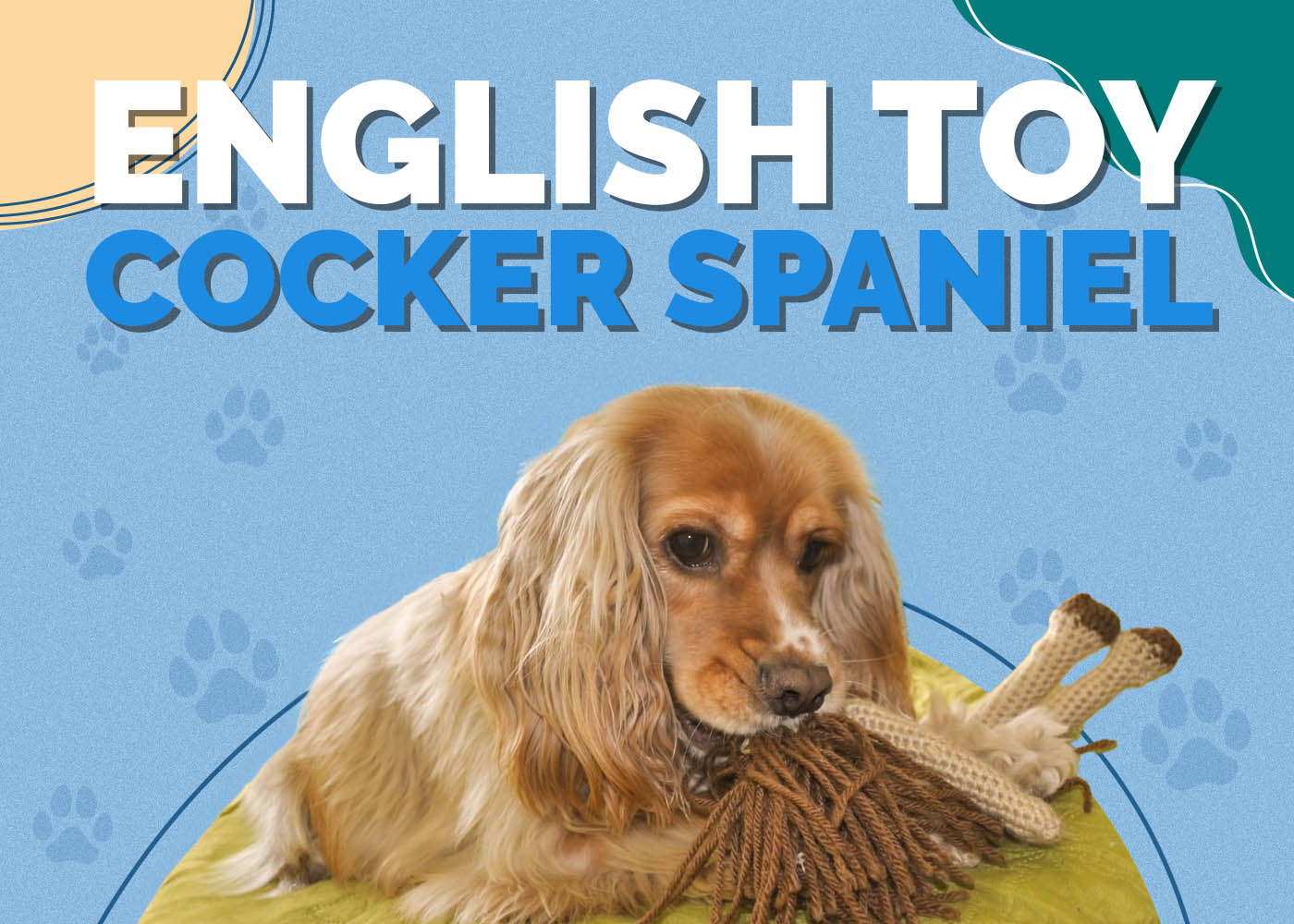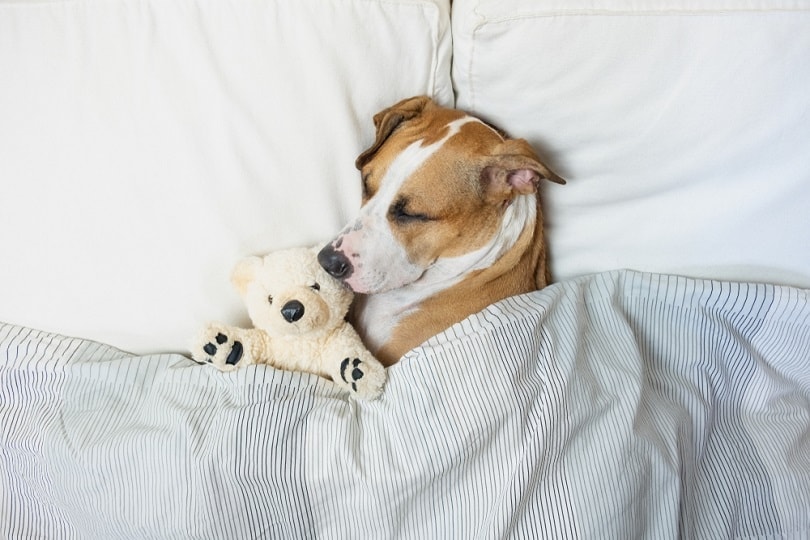Petite Golden Retriever (Cavalier King Charles Spaniel & Golden Retriever Mix): Info, Pictures, Facts

Updated on

Height:
12-24 inches
Weight:
25-65 pounds
Lifespan:
8-12 years
Colors:
Golden, cream, red, brown
Suitable for:
First-time dog owners, single owners, families with children, families with multiple dogs
Temperament:
Active, affectionate, needy, loyal, playful
Though the Petite Golden Retriever’s parent breeds – the Cavalier King Charles Spaniel and Golden Retriever – may both hail from the British Isles, it’s speculated that this designer dog breed is actually an American invention. While this breed’s origin may be lost to the sands of time, one thing is for certain: They make wonderful companion animals!
As the cross of a breed that was made as the first “lap dog” and a long-time hunter turned disability assistance dog, the Petite Golden Retriever takes the best qualities from both sides of its family tree to produce a breed that is energetic but not pushy, playful but not aggressive, and nervous but not whiny.
If you’ve been considering whether this rare and obscure designer dog might be right for your home, then you’re in luck because we’ve put together the ultimate guide to everything you’ll need to know before buying or adopting a Petite Golden Retriever. Read on to find out more about its history, best and worst attributes, and important health information.
Petite Golden Retriever Puppies

If you’ve come here to do research on this uncommon breed, then you’re likely aware of the huge commitment of time, money, effort, and attention that bringing a dog into your life entails. Before deciding whether the Petite Golden Retriever is the right breed for you, it’s best to consider the qualities that its parent breeds have passed down to it.
One of the original “toy” dog breeds to grace English society, the Cavalier King Charles Spaniel was also one of the first dogs to be bred solely as a companion animal. Lacking any special instincts as a hunting dog, and without the sense of urgency required of watchdogs, they have instead been prized for their loving, affectionate natures and gentle interactions with children.
Cavalier King Charles Spaniels hate being left alone, and absolutely do not tolerate long periods of isolation. This makes them ideally suited as dogs for larger families, or families with a stay-at-home parent. That way, they always have company and will never suffer the nervous anxiety that comes with being left alone.
Golden Retrievers enjoy a reputation as being highly intelligent and versatile dogs that can be trained to perform a variety of roles. You may commonly see them as disability assistance dogs, hunting dogs, drug detection dogs, or as part of a search and rescue team. Extremely energetic and always on the go, they need to be given a job to do to feel fully comfortable and at ease while at rest.
Combining the traits of these two seemingly opposite dog breeds produces a remarkably affable companion dog breed. The Petite Golden Retriever displays a calm confidence and warm kindness thanks to its Golden Retriever side, while the Cavalier King Charles Spaniel’s influence keeps their overactive personalities in check.
In one word, the Petite Golden Retriever is balanced, making it a fantastic pet for many different households and living situations.
3 Little-Known Facts About the Petite Golden Retriever
1. You’ll Rarely Find a Petite Golden Retriever in Either of Its Parents’ Homelands
Both the Golden Retriever and Cavalier King Charles Spaniel originated in the British Isles, but the Petite Golden Retriever is almost never found there. In fact, many dog breeders in the United Kingdom look down on the crossing of two such esteemed purebred dogs, which is why you’re unlikely to find this designer dog in either of its parents’ hometowns.
2. Petite Golden Retrievers Are One of Only a Few Dog Breeds That Gets Along Well With Cats
While not entirely explained by the temperament of either of its parent breeds, the Petite Golden Retriever is a remarkably tolerant breed that does well with small animals of all sorts. If you’re looking for a dog that can live in harmony with your cat, rabbit, rat, or bird, the Petite Golden is an excellent choice.
3. They Make Terrible Watchdogs
A remarkably friendly breed, the Petite Golden Retriever is renowned for its ability to make friends with strangers. From people you pass in the street to an intruder in your backyard, the Petite Golden is always happy to get to know somebody new! While this friendliness makes them a hit at the local dog park, it also means that they’re entirely unsuited to be kept as watchdogs.

Temperament & Intelligence of the Petite Golden Retriever 🧠
Partaking of the Golden Retriever’s intelligence and quick wit as well as the Cavalier King Charles Spaniel’s affectionate nature, the Petite Golden Retriever is a nearly perfect combination of sweet and smart. Resembling a smaller, calmer version of some of the world’s most popular dog breeds, they’re quickly becoming a popular option for anyone who loves the Golden Retriever’s personality but can’t keep up with their exercise requirements.
Are These Dogs Good for Families? 🏡
The Petite Golden Retriever is perhaps one of the best dogs for families of any size, including those with small children. They always want to have friends and family around and are gentle and affectionate towards children of all ages.
Does This Breed Get Along With Other Pets? 🐶 😽
Keeping with its penchant for making friends with strangers everywhere, the Petite Golden Retriever is equally affectionate towards other dogs and even gets along well with small animals, too. Though they may occasionally give chase to cats, rabbits, or rats, they’re entirely gentle and would never hurt another animal intentionally. So, it’s best to keep an eye on them and ensure they have plenty of socialization with other animals.

Things to Know When Owning a Petite Golden Retriever:
Is the Petite Golden Retriever sounding like the dog of your dreams? If so, here are a few more things you should know about how best to take care of their health.
Food & Diet Requirements 🦴
Petite Golden Retrievers require no special dietary considerations and require relatively little food thanks to their small size. Consult with your vet to find the right food for each stage of their life, and plan on feeding them around 2 cups of dry food per day, split into three meals.
Exercise 🐕
The Petite Golden Retriever’s moderate exercise requirements may well be the most desirable thing this designer dog breed offers. Unlike their hyperactive Golden Retriever parents, the Petite Golden does not need two to three hours a day of vigorous exercise. Usually, moderate intensity exercise for up to an hour a day will be plenty to keep them healthy and happy.
Training 🦮
Highly intelligent and always eager to please, the Petite Golden Retriever learns tricks and commands very quickly and retains them well. They can even be trained to complete agility courses and have been known to enjoy rewards of both treats and pets.
Grooming ✂️
Possessing thick coats that shed moderately, Petite Golden Retrievers do well with consistent daily brushing. Plus, they’ll love the extra attention given to them while being groomed – a win-win for both dog and owner alike.
Health and Conditions ❤️
Petite Golden Retrievers will experience medical conditions less frequently than either of their parent breeds but are prone to diseases unique to both sides. Some of the most common conditions they may experience include:
- Cataracts
- Diabetes
- Hypothyroidism
- Dry eyes
- Hip, elbow, mitral valve, or retinal dysplasia
- Subaortic stenosis
- Cancers
- Syringomyelia
- Von Willebrand’s disease
- Epilepsy
Male vs. Female
You’ll find little difference between male and female Cavalier King Charles Spaniel and Golden Retriever mix, save perhaps the female’s tendency to put on more weight as they age. If you’re looking for a particular personality in your Petite Golden, pay closer attention to the individual puppy than its sex.
Final Thoughts
A truly virtuous combination of the best attributes of both Golden Retrievers and Cavalier King Charles Spaniels, the Petite Golden Retriever is an incredibly gracious dog that would make a perfect addition to many homes. Energetic but not hyperactive, they offer all of the desirable characteristics of a Golden Retriever in a smaller, more manageable package.
See also:
- Goldmaraner (Golden Retriever & Weimaraner Mix): Info, Pictures, Traits
- Beago (Beagle & Golden Retriever Mix) Info, Pictures, Traits
Featured Image: Herky Photography, Shutterstock










